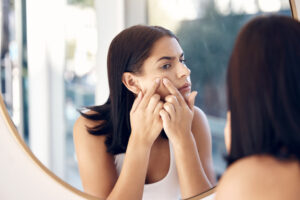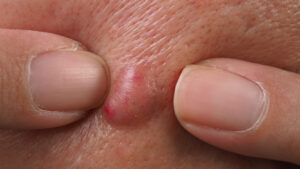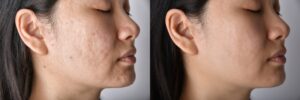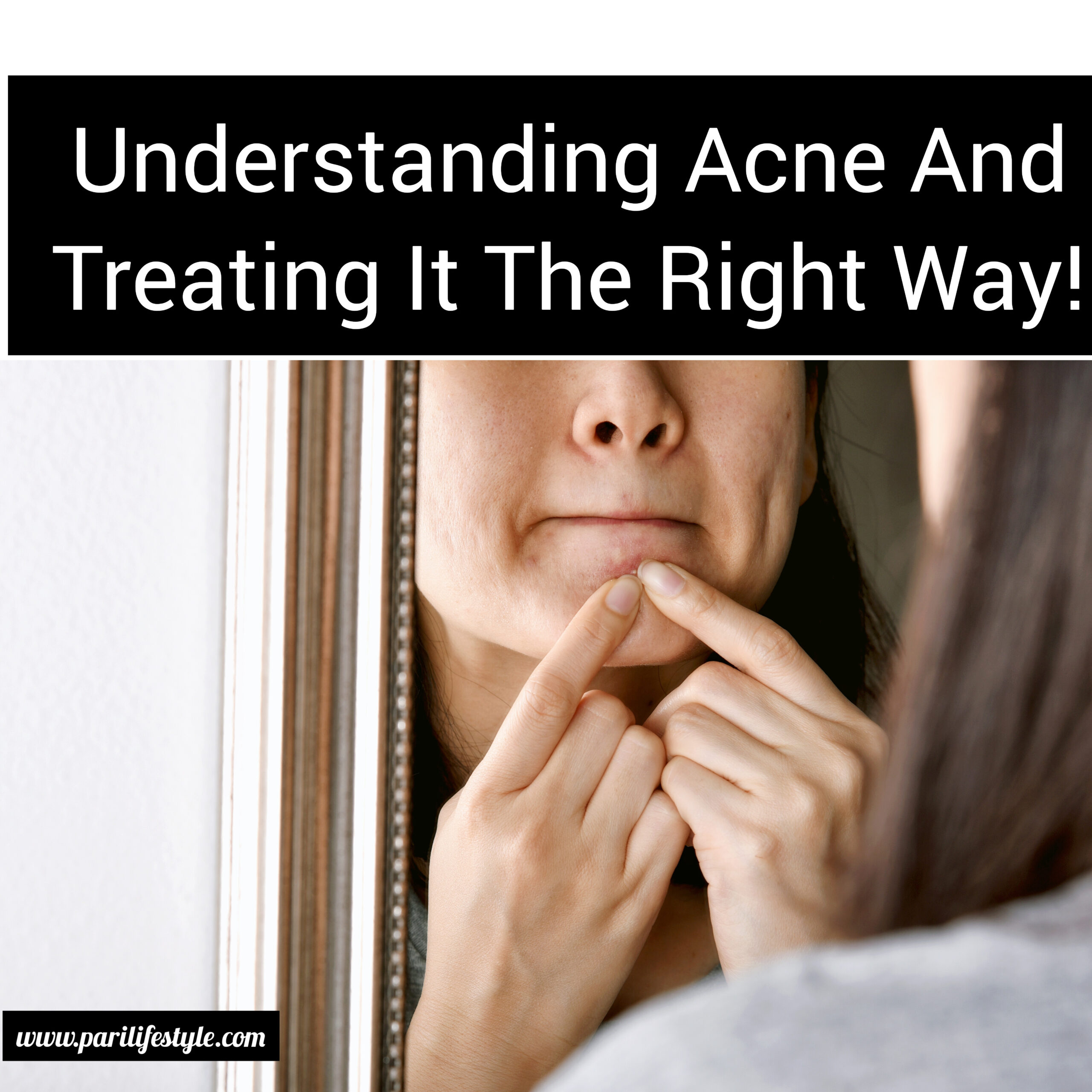There are many people worldwide, who are affected by this common skin condition- acne. Acne can manifest as pimples, blackheads, whiteheads, blemishes and cysts and can appear on the face, neck, chest, back, and shoulders. Although it is often associated with puberty, which is often termed as ‘hormonal acne’, there are other contributing factors to acne. With so many different products and treatments available, it can be overwhelming to figure out the best way to tackle acne. This article will dive into the causes of acne, its types, and the most effective treatments for getting rid of it. Whether you are dealing with hormonal acne or a full-blown acne problem, this guide will help you understand how to treat your skin with care and achieve a clear, glowing complexion.
What Is Acne?

Acne is a chronic skin condition resulting in face acne, pimples, blackheads, whiteheads, and cysts. Acne develops on the skin, when the pores of the skin become clogged with dirt, dead skin cells and grime produced by the sebaceous glands. Bacteria can also get trapped in these clogged follicles, leading to inflammation and the formation of pimples.
Types Of Acne

Based on the severity of acne, it is categorized into six different types.
- Blackhead
Also known as ‘open comedones’, which appear as dark spots on the skin. Blackhead is caused when the skin’s pores get clogged with debris and dead skin cells. Being open comedones, it turns dark when the clog comes in contact with air.
- Whitehead
They are known as ‘closed comedones’ and appear on the skin as white spots. They appear on the skin like medium to small bumps. This clogged pore is covered by a layer of skin and becomes filled with pus giving it a white appearance
- Papules
It has swollen red bumps that appear on the skin. Accumulation of excess sebum and dead skin cells in the pores of the skin result in the formation of papules. Due to increased pressure which develops on the pores, its sides start rupturing, forming papules in response to your body’s immune system.
- Pustules
It is similar to papules filled with pus, creating large bumps on your skin. These bumps are covered with a yellow cap, giving them the appearance of pimples.
- Nodules
It is a severe form of acne which develops with the occurrence of hard, painful lumps that occur under the skin. It is challenging to treat nodules as it occurs deep under the skin
- Cysts
Cyst is another acute form of acne. It is similar to nodules, filled with pus but soft to touch. Cysts are very painful and often difficult to treat.
These types of acne are mostly found on the face, chest, shoulders, neck, and back. Adolescents and young adults are more susceptible to acne.
How Do I Know Which Acne Treatment Is Right For Me?

Before you look for an acne treatment, you should know what to look for in your acne medication. Some ingredients used in acne treatment can be harsh on your skin, causing dryness, redness and skin peeling. A better understanding of the key ingredients in anti-acne products will help you opt for the right acne treatment. Anti-acne skincare products target acne in different ways. Some acne products focus on reducing excess sebum production and improving cell turnover, thus controlling acne. However, others work by targeting the bacteria responsible for causing skin infection and inflammation. To help you choose the right acne treatment, let’s know more about the common skincare ingredients used in major anti-acne products.
- Benzoyl Peroxide
Benzoyl peroxide is commonly prescribed for treating acne. It works by eradicating the bacteria responsible for causing acne and reducing the amount of oil produced by the skin.
- Salicylic Acid
Salicylic acid is gentle on skin, acts as an exfoliator and unclogs the blocked pores of the skin, preventing further breakouts.
Azelaic Acid
It is gentle on your skin and can be safely used by most skin types. It controls acne by fighting the bacteria responsible for acne and reduces the production of keratin, which gets clogged in the skin’s pores, resulting in acne formation. Its anti-inflammatory property calms the inflamed skin, effectively reducing the appearance of acne.
I’d recommend using Anveya’s 24K Gold Goodbye Acne Kit containing azelaic acid if you have severe acne. It is a key ingredient in the facial cleanser and serum, which work together to alleviate the symptoms of acne. It combines luxurious, radiance-boosting ingredients with proven acne-fighting ingredients to provide a complete skincare solution.
- Alpha Hydroxy Acid
Common alpha hydroxy acids such as lactic acid and glycolic acid act as gentle exfoliators, sloughing away dead skin cells and soothing inflamed skin. It promotes cell turnover, fades away acne scars and blemishes, reducing its appearance.
- Adapalene
Adapalene is a retinoid type that helps clear clogged pores, controlling acne and preventing further breakouts. You should not apply Adapalene-based products on open cuts and wounds.
When you start with the acne treatment, apply the anti-acne products containing azelaic acid and niacinamide, as this combination is gentle on your skin and heals the acne without having any side effects. Both these ingredients enhance the efficacy of each other in the product formula. It is suitable for all types of skin; this bioactive duo gives noticeable results by shrinking the enlarged pores, clarifying your skin, and improving the appearance of acne. These skincare heroes, along with 24K gold and zinc PCA, are the key ingredients of Anveya’s 24K Gold Goodbye Acne Kit, which you must try to attain healthy, clean and clear skin.
It’s important to talk to your doctor or a dermatologist before starting any new acne treatment. They can help you determine the best action for your needs and skin type.
Read this- https://parilifestyle.com/5-things-teenager-needs-the-most-from-their-parents/

